P0420
Symptom: The CHECK ENGINE lamp (MIL) is on
Catalytic converter
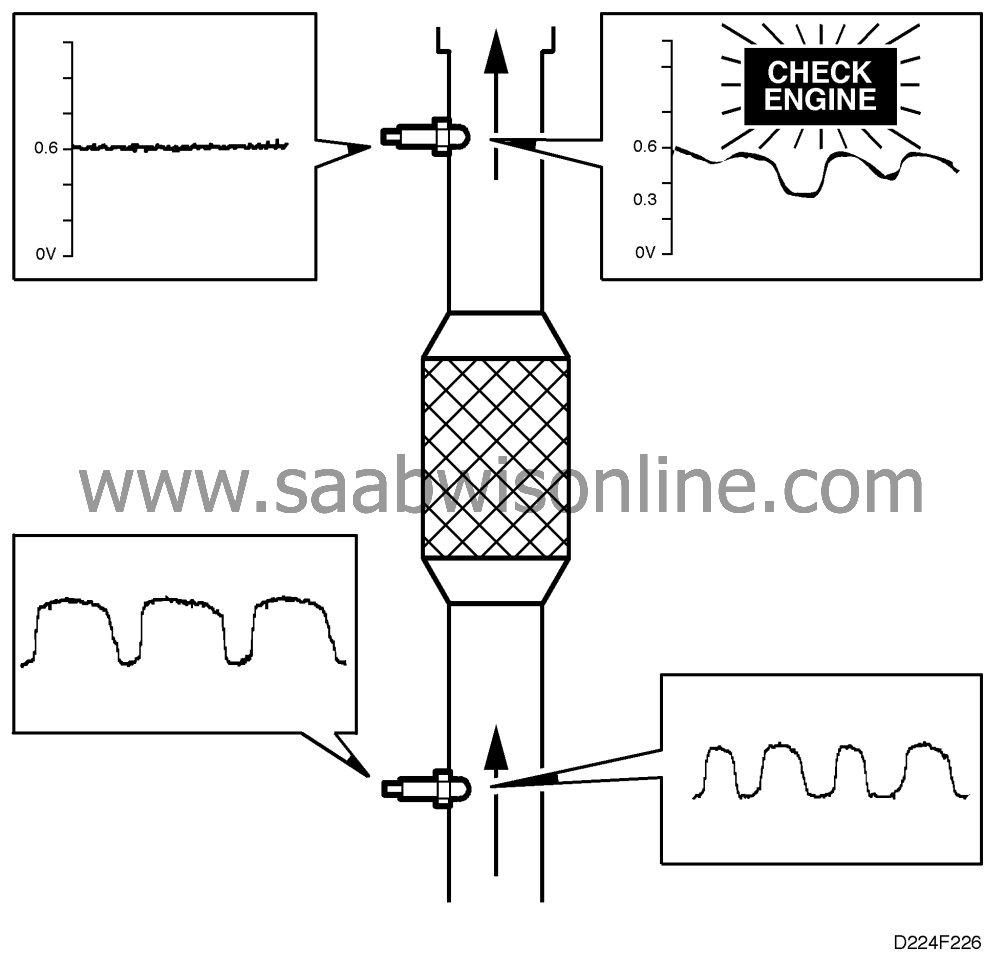
Symptom of fault
The CHECK ENGINE lamp (MIL) is on
Conditions
Diagnosis not yet performed this trip
Heating of the three way catalytic converter:
|
•
|
Engine speed (rpm) x load (kPa) = >60 000
|
|
•
|
Aggregate acceleration >15 sec.
|
|
•
|
Above conditions fulfilled for 120 sec.
|
Evaluation of the three way catalytic converter
|
•
|
Engine speed (rpm) x load (kPa) = 60 000-120 000
|
|
•
|
Coolant temperature >60°C (>140°F)
|
|
•
|
Rear heated oxygen sensor >0.4 V at any time in this driving
cycle
|
Rear heated oxygen sensor voltage changes are corrected in regard to engine
load and rpm and totalled in a measurement window determined by the front heated oxygen
sensor. If the total exceeds a calibrated value, the fault criteria are satisfied.
Diagnostic help
A temporary or permanent decrease in the capacity of the three way catalytic converter
may be caused by:
|
•
|
leaded fuel or fuel with a sulphur
content.
|
|
•
|
additives in the motor oil if oil consumption is abnormal
|
. Intermittent faults may occur as a result of
occasional short circuits and breaks in the wiring. Jiggle the leads and in-line connectors at
several places and in different directions to reveal faults in the wiring harness. Observe the
multimeter, ISAT scan tool or test lamp while carrying out this check.
Diagnostic procedure
1. Check the exhaust system
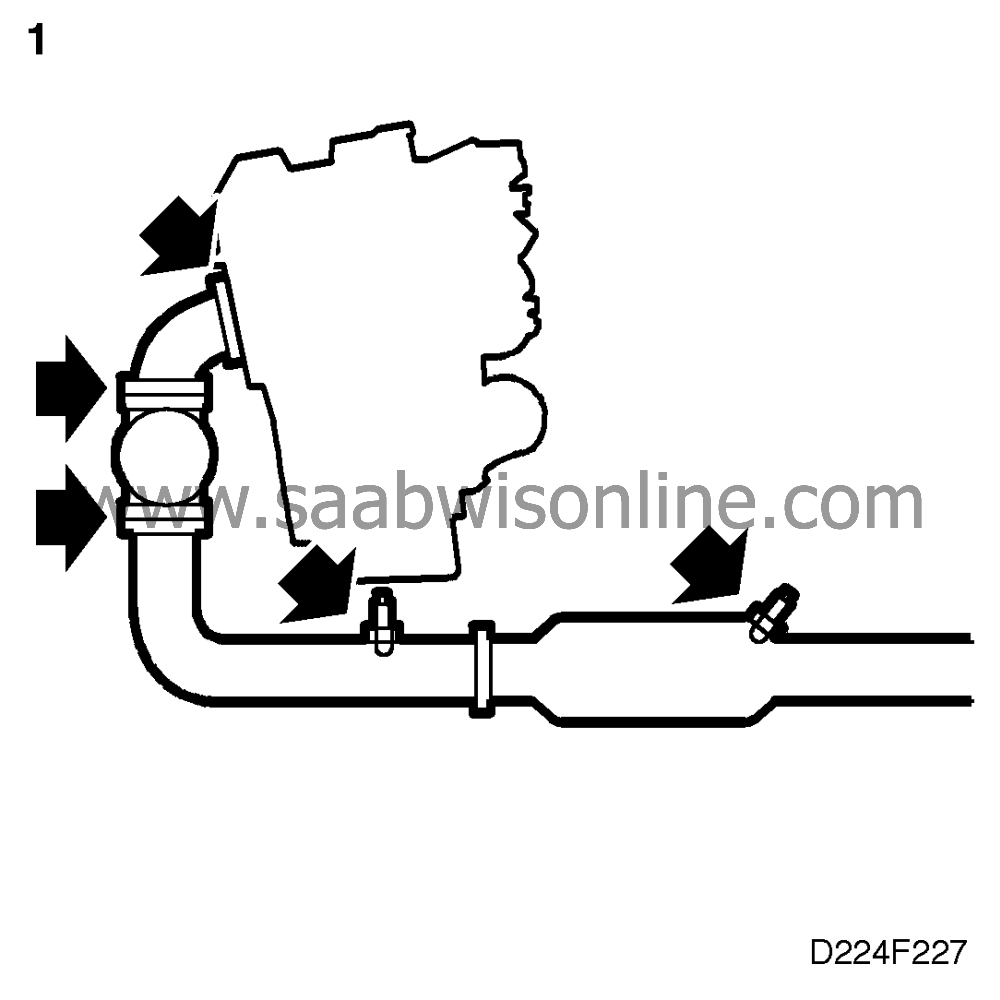
|
-
|
Start the engine and run it at idling
speed.
|
|
-
|
Check the exhaust system for
leakage between the engine and the rear heated oxygen
sensor.
|
Any leakage?
Rectify the fault and proceed to point 4.
Continue with point 2.
2. Check the rear heated oxygen sensor's
cable
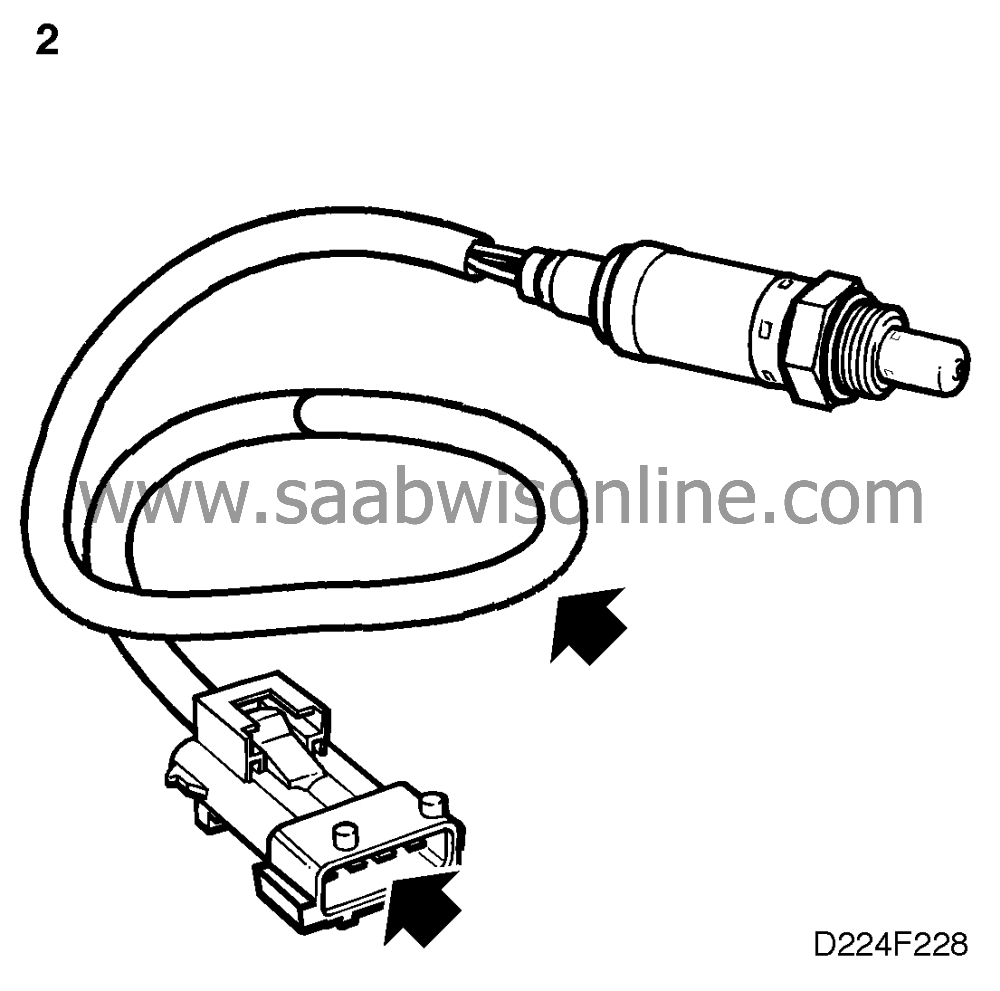
|
-
|
Inspect the cable visually for
chafing of the insulation or loose contacts in the connector.
|
Is the cable OK?
Change the three way catalytic converter and continue with point
3.
Rectify the fault and proceed to point 4.
3. Check the fuel system
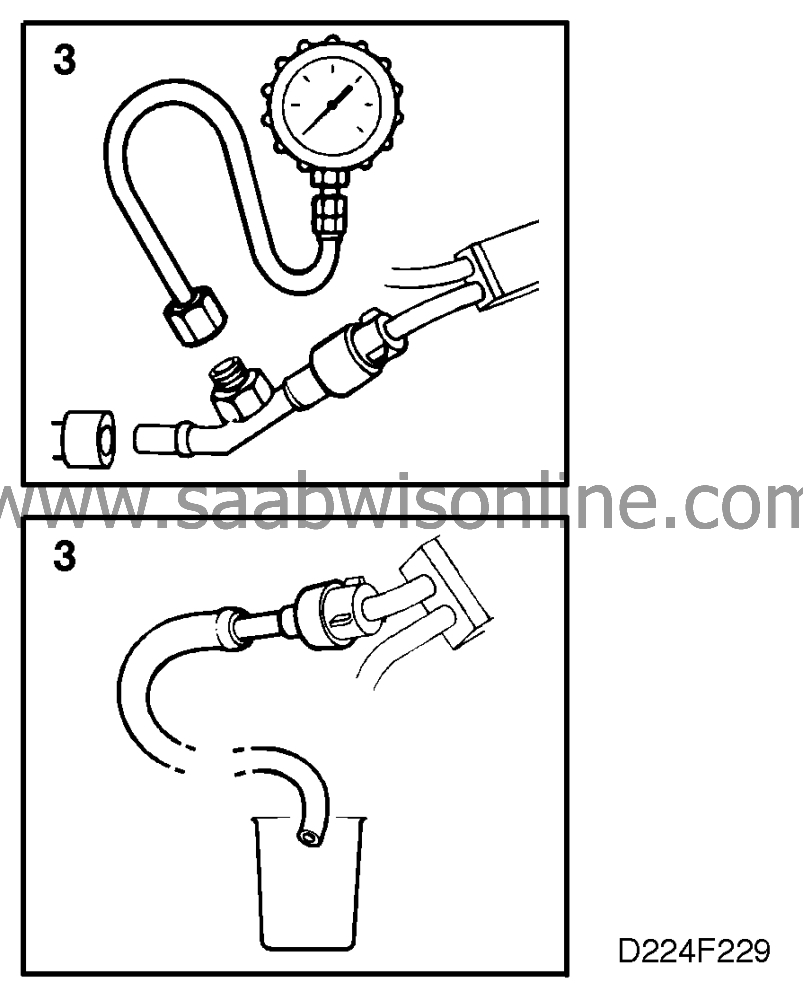
|
-
|
Check the fuel pressure and fuel
pump delivery flow.
|
All OK?
Continue with point 4.
Rectify the fault and then continue with point 4.
4. Final check
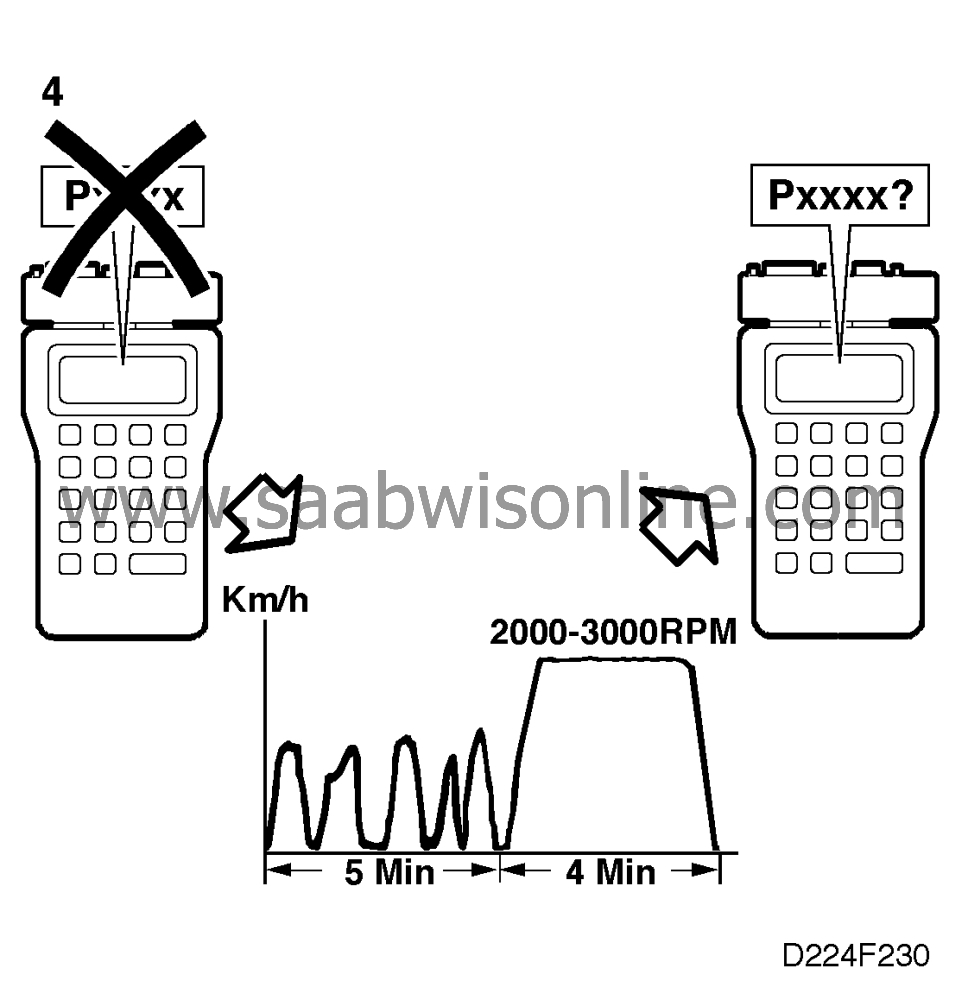
|
-
|
Clear the diagnostic trouble
code.
|
|
-
|
Implementation of driving
cycle:
|
|
|
•
|
Drive the car at varying engine
loads and rpm until the temperature of the coolant reaches 60°C (140°F), or for at
least 5 minutes if this temperature is reached earlier.
|
|
|
•
|
Drive the car at a steady throttle opening at 40-90 km/h for 4 minutes (select a
gear so that engine speed is 2000-3000 rpm).
Since throttle position changes should be avoided, as level a road as possible should be
chosen for this test.
|
|
-
|
Evaluation of the driving
cycle:
|
|
-
|
Connect an ISAT scan
tool.
|
|
-
|
Select
"DIAGNOSTIC STATUS".
|
|
-
|
Select
"CATALYTIC CONVERTER".
|
Does the ISAT scan tool show "NOT READY"?
Repeat the driving cycle.
Check whether the diagnostic trouble code has recurred.
Has the diagnostic trouble code recurred?
Proceed to
 .
.
The remedial measure taken was correct.








